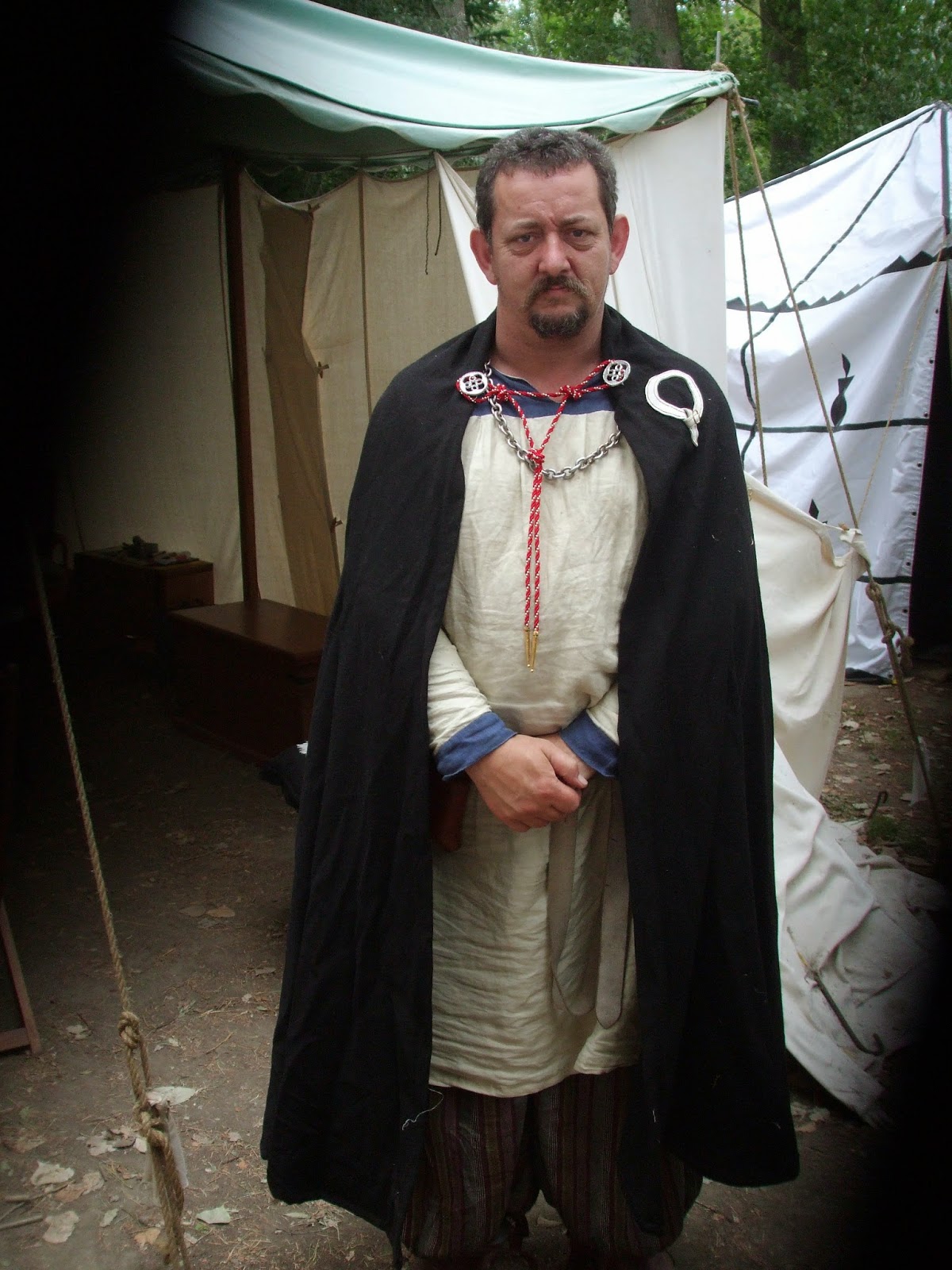In my last post I talked about the bulk lot of wax tablets Bjorn and I made as site tokens for Canterbury Faire. A nice exercise in mass production but not hugely fulfilling from the point of view of making really nice period pieces using period processes and tools.
We decided to make twenty or so using period equipment and some lovely english oak that happened to be lying around the workshop.
Since we'd put the effort in to research the correct methods and appearance and found some nice examples online we decided to experiment a bit.
We figured the Steward and Their Excellencies could use these tablets as both gifts and largesse so we made some specifically for some people and others we made a bit more generic.

We made a pair of arched tablets for Their Majesties. They were hand cut and gouged and filled with a vibrant red wax. I bound them with leather and Bjorn made brass styli to go with them. They were finished with a little beeswax polish.

I also made some oak tablets of about the same dimensions as the bulk lot but made by hand this time to try to get the techniques down pat. I found with a truly sharp chisel I could get the oak, which was very well seasoned to peel away like butter so I simply had to mark the boundaries of the cavity with a 50mm chisel and push out the 5mm or so of wood inside. These were also given the red wax and leather treatment.

The most satisfying part of the project was the discovery of sets of small tablets in leather cases, mostly from fairly late in period. My leather work was not spectacular so my first thought was to make the small sets but put them in little hardwood boxes.
The tablets are double sided and are only about matchbox size so they are very fiddly but again a very sharp chisel produces a satisfying result.

However it was sets like this that had impressed me so I went ahead and tried to make leather cases for a dozen or so sets.
I used 2-3mm vege tanned leather whic I wet and stitched around the set of tablets and left to dry. This formed the inner layer which was then covered with a second layer, also wet and stitched. I cut oak ends for the sets and when the leather was dry glued them in place, flush with the ends.

While they were drying I inserted rods into the sides of the cases to make channels for the cords and the stylus at the front of the case.

All that remained from the cases point of view was to dye the case, seal it with leather sealer and fit the cords to hold it together and hang from a belt.
I made a couple of tooled leather cases for a couple of friends but I haven't got pics of them at the moment so that's for another day.
Big thanks are due in the wax tablets project to Bjorn Svartsson who was an excellent partner to work with and taught me a lot, particularly about the waxing process and bored himself silly making styli and to Lowrens Williamson who made the lovely brand for the site tokens.
 I decided not to cover my whole shield with my arms but to surround them with an orle of my badge and the Caidan cross. The shield is T-6 aluminium but I've tried to mitigate the appearance by covering it with painted canvas and continuing the canvas right over the edging.
I decided not to cover my whole shield with my arms but to surround them with an orle of my badge and the Caidan cross. The shield is T-6 aluminium but I've tried to mitigate the appearance by covering it with painted canvas and continuing the canvas right over the edging.
















